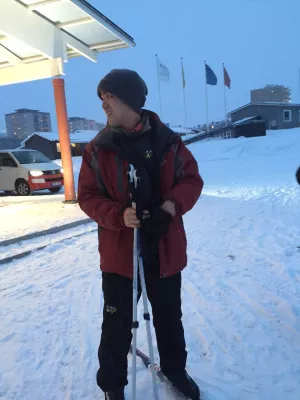
Minjie Zheng
Postdoctoral fellow

Tendency of soil erosion dynamics by coupling radioisotopes and RUSLE model on the Southeastern Tibetan Plateau in response to climate warming and human activity
Author
Summary, in English
Soil erosion has created landscape problems in many parts of the world and in particular in cold regions where the sensitive permafrost conditions have changed due to climate warming. Such a case occurred in the Tibetan Plateau (TP), which has been strongly affected by global warming and human activities. Monitoring technologies, like remote sensing and field surveys were used to explore soil erosion rates in the TP, but they were limited by the resolution and meteorological disturbance factors or the spatial and time scales. Here, we present for the first time 210Pbex (excess lead-210) and 137Cs (caesium-137) data of soils from the southeastern TP (SETP) covering an area of 640,000 km2. In the permafrost-dominant areas, the results show mean soil-erosion rates in the last 56–100 years that were relatively higher (1891 t·km−2·a-1) based on 210Pbex than those based on 137Cs (1623 t·km−2·a-1). Modelling results from the Revised Universal Soil Loss Equation (RUSLE) indicate relatively high mean soil erosion rates of 4363 and 4394 t·km−2·a-1 using a period covering the last 40 or 10 years respectively. Our data suggest accelerating erosion rates on the SETP that are linked to permafrost degradation, and glacier and snow melting due to accelerating global climate warming. The increase in ground surface temperature of ∼2 °C in the last four decades has further shifted the regional hydrology, affecting the degeneration of vegetation cover and a further increase in soil-erosion rates. However, our radionuclides data also expose low erosion rates in the seasonally frozen ground at some sampling sites which indicates the complex nature of erosion trends in cold regions that require careful adaptation of soil management.
Department/s
- Quaternary Sciences
- MERGE: ModElling the Regional and Global Earth system
Publishing year
2023-04
Language
English
Publication/Series
Catena
Volume
223
Document type
Journal article
Publisher
Elsevier
Topic
- Physical Geography
Keywords
- Pb and Cs
- Climate warming and human activity
- RUSLE
- Soil erosion
- Southeastern Tibetan Plateau
Status
Published
ISBN/ISSN/Other
- ISSN: 0341-8162

